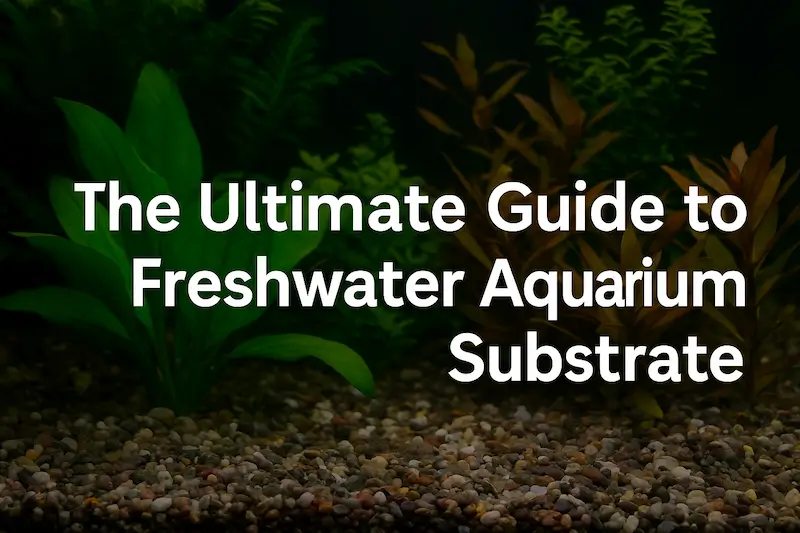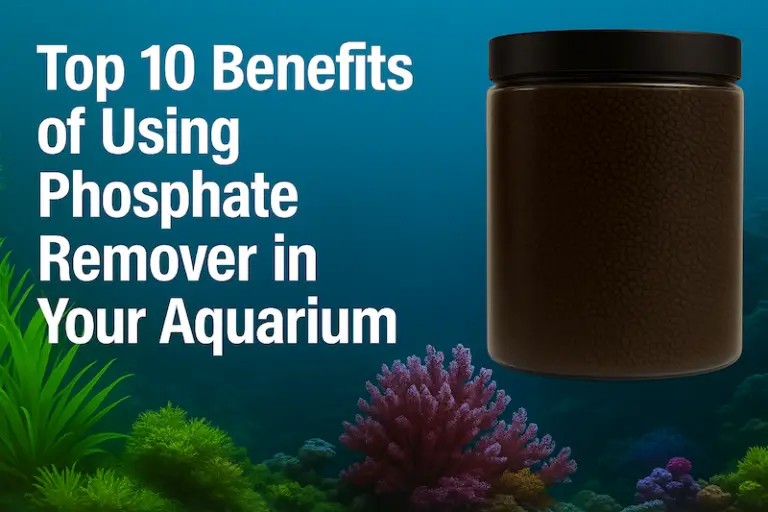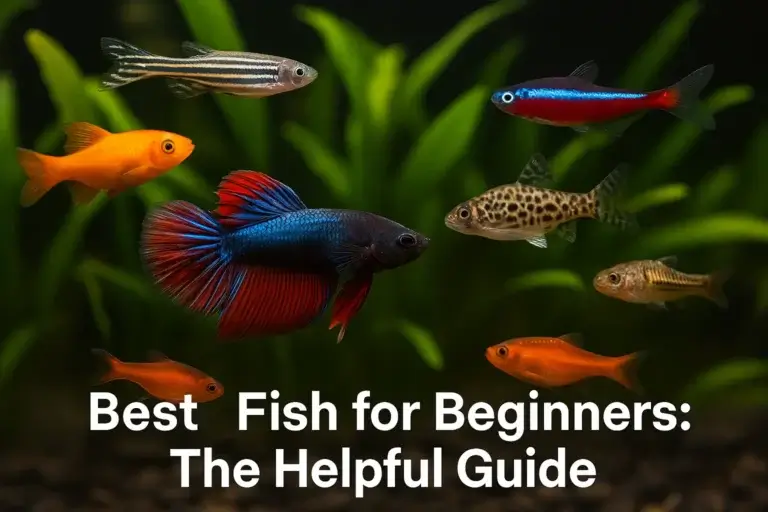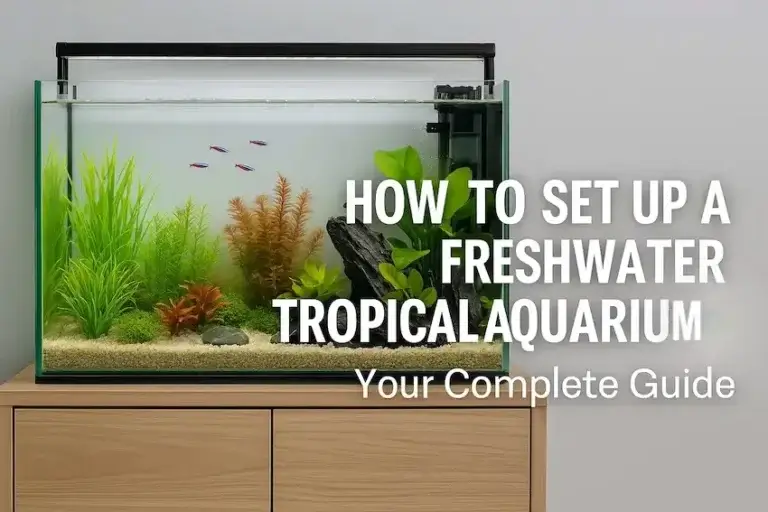Your Ultimate Guide to Freshwater Aquarium Substrate
Creating a thriving freshwater aquarium involves several crucial elements, one of which is often overlooked: substrate. The right substrate doesn’t just enhance your aquarium’s aesthetics—it provides a foundation for aquatic plants, improves water chemistry, and benefits your tank’s inhabitants.
What is Aquarium Substrate?
Aquarium substrate refers to the material that lines the bottom of your tank. It plays several important roles in a freshwater aquarium:
Aesthetic Value: Substrate enhances the visual appeal of your tank by providing a natural-looking base.
Beneficial Bacteria Growth: Substrate provides a home for beneficial bacteria that help maintain water quality.
Plant Growth Support: For aquariums with live plants, certain substrates supply essential nutrients for root development.
Fish Comfort: Many species of fish interact with the substrate, either by burrowing, sifting, or scavenging.
Water Chemistry Regulation: Some substrates influence pH levels, water hardness, and other chemical parameters.
Types of Freshwater Aquarium Substrate
The choice of substrate depends on the type of aquarium you’re setting up. Here’s a breakdown of the most popular types:
1. Gravel

Gravel is one of the most commonly used substrates in freshwater aquariums. It’s available in a variety of sizes, colors, and materials.
Pros: Easy to clean, provides good water flow around plant roots, available in natural and artificial colors.
Cons: Can trap debris if not maintained, may not provide nutrients for plants.
2. Sand

Sand creates a smooth, natural look and is ideal for tanks with bottom-dwelling fish like corydoras and loaches.
Pros: Soft and gentle for burrowing species, prevents debris from sinking deep, looks natural and elegant.
Cons: Compacts over time, which may hinder root growth; requires careful cleaning to avoid stirring up particles.
3. Soil

Aquarium soil is nutrient-rich and designed specifically for planted aquariums. It supports healthy plant growth by providing essential nutrients.
Pros: Excellent for planted tanks, maintains stable pH levels, encourages healthy root systems.
Cons: Can cloud water if disturbed, needs careful initial setup to avoid excess nutrients leaching.
4. Crushed Coral

Though primarily used in saltwater tanks, crushed coral can be used in freshwater setups to raise pH and water hardness.
Pros: Ideal for hard-water-loving species like African cichlids, helps maintain stable water chemistry.
Cons: Not suitable for soft-water fish, limited aesthetic appeal.
5. Bare-Bottom Tanks

Some aquarists prefer not to use any substrate at all. This setup is common in breeding tanks or quarantine tanks.
Pros: Easy to clean, ideal for tanks requiring constant monitoring.
Cons: Lacks aesthetic appeal, no place for beneficial bacteria to thrive.
Substrate Choices for Different Types of Fish
Tailor your substrate to suit your tank’s inhabitants:
Corydoras & bottom feeders: Prefer soft, smooth sand to prevent injury to barbels.
African Cichlids: Crushed coral or aragonite sand helps maintain their preferred alkaline pH.
Goldfish: Large, rounded gravel to prevent ingestion, or bare-bottom tanks for easy cleaning.
Betta fish: Fine gravel or smooth sand for ease of movement and aesthetic appeal.
Loaches: Soft sand is ideal for burrowing and prevents damage to sensitive skin.
Nutrient-Rich Substrates for Planted Aquariums
Live plants need more than water and light—they need root support:
Popular options: ADA Aqua Soil, Fluval Stratum, CaribSea Eco-Complete.
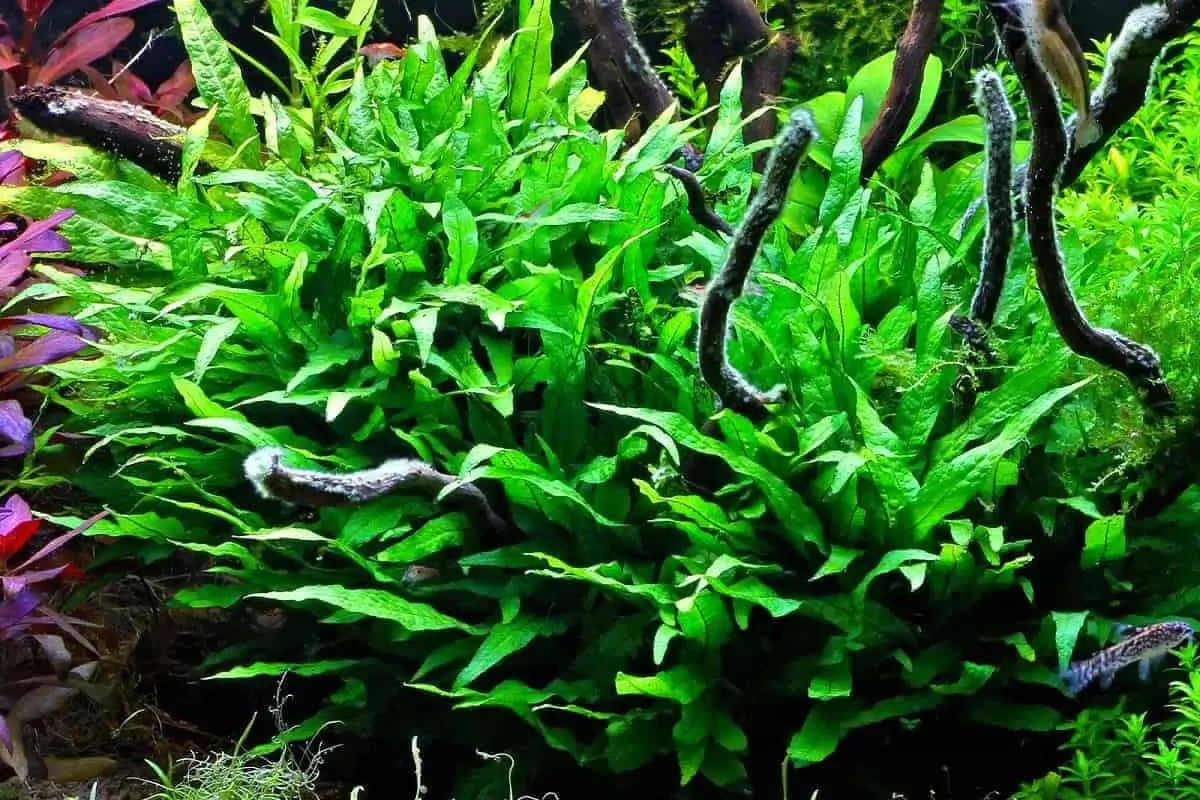
Benefits:
- Provide iron, potassium, and trace minerals.
- Support strong root growth and vibrant foliage.
Tip: Combine with root tabs for heavy feeders like Amazon swords and cryptocorynes.
Layering Substrate: Pros & Cons
Multi-layering can boost plant health—but it has caveats:
Pros:
- Base layer (nutrient-rich) feeds roots.
- Top layer (sand/gravel) prevents cloudiness and compacting.
Cons:
- Mixing layers over time can reduce effectiveness.
- Harder to clean without disturbing nutrient base.
Recommendation: Use a mesh or fine divider if layering long-term.
Coloured or Decorative Substrates: Are They Safe?
Aesthetic doesn’t have to mean risky:

- Look for non-toxic, aquarium-safe labels.
- Avoid painted or cheap dyed substrates—they may leach toxins.
- Some coloured gravels can change water parameters or flake over time.
- Use inert materials if you want to avoid chemical changes in water.
Cleaning and Maintenance Tips
Proper substrate care = cleaner tank and healthier fish:
- Gravel vac weekly to remove waste buildup.
- Sand: Stir regularly to avoid anaerobic pockets; siphon with care.
- Planted tanks: Spot-clean only to avoid disturbing roots.
- Deep cleans: Only necessary during major tank overhauls.
Substrate That Alters Water Parameters
Be aware of what your substrate is doing to your water:
- Crushed coral/aragonite: Raises pH and hardness (great for cichlids).
- Peat moss: Lowers pH and softens water (great for tetras/discus).
- Aqua soil: Can initially lower pH and release ammonia—cycle carefully.
Always match substrate type to fish preferences and monitor water chemistry.
Best Substrates for Shrimp and Invertebrates
These critters have special needs too:
- Caridina shrimp: Need pH-buffering substrates like ADA Amazonia.
- Neocaridina shrimp: Do well with inert sand or gravel.
- Snails/crabs: Need calcium-rich substrate to support shell health.
Important: Avoid sharp gravel that can injure delicate feet or feelers.
How to Change Your Substrate
Planning is key—don’t stress your fish or crash your cycle:
- Step-by-step:
- Remove fish and place in temporary holding with aerated tank water.
- Siphon old substrate out in sections to preserve beneficial bacteria.
- Add new substrate slowly and replant as needed.
- Monitor ammonia/nitrites for the next 48 hours.
- Optional: Do it in phases over a few weeks for minimal disruption.
Budget vs. Premium Substrate Options
Spending smart doesn’t mean skimping on quality:
- Budget options:
- Inert sand/gravel from hardware stores (ensure rinsed and aquarium-safe).
- Play sand (rinsed very thoroughly).
- Premium options:
- Specialized planted tank soils.
- Pre-buffered substrates for shrimp or cichlids.
- Final advice: Invest in substrate that supports your specific livestock—it pays off long term.
How Much Substrate Do You Need?
Use this handy guide based on your tank’s size:
- General rule:
- 1–2 inches (2.5–5 cm) of substrate across the base for community tanks.
- 2–3 inches (5–7.5 cm) for planted tanks to allow proper root growth.
Substrate estimate by tank size:
| Tank Size | Litres | UK Gallons | US Gallons | Substrate (Approx.) |
|---|---|---|---|---|
| Small Tank | 20 L | 4.4 gal UK | 5 gal US | 5–7.5 kg (11–16 lbs) |
| Medium Tank | 60 L | 13.2 gal UK | 15 gal US | 8–10 kg (18–22 lbs) |
| Community Tank | 100 L | 22 gal UK | 26 gal US | 12–15 kg (26–33 lbs) |
| Large Tank | 180 L | 40 gal UK | 47 gal US | 18–25 kg (40–55 lbs) |
| XL Tank | 250+ L | 55+ gal UK | 66+ gal US | 30+ kg (66+ lbs) |
💡 Tip: Use an online aquarium substrate calculator by entering your tank’s dimensions (length × width × desired depth) for exact results.
Conclusion
The substrate you choose for your freshwater aquarium sets the stage for a healthy, thriving ecosystem. Whether you opt for gravel, sand, soil, or crushed coral, understanding your tank’s needs is key to making the right choice.
Take the time to research, plan, and maintain your substrate to ensure long-term success for your aquarium. Happy aquascaping!

